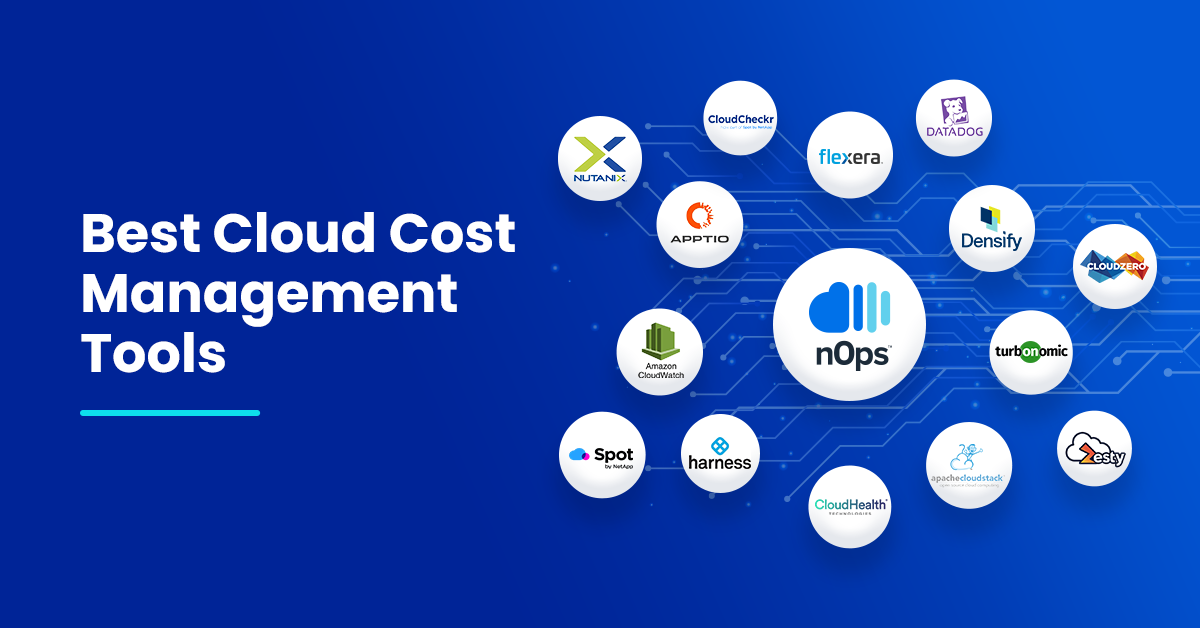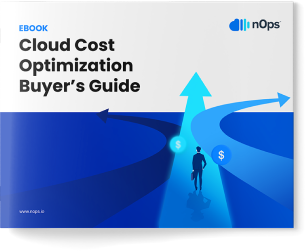Cloud spending is forecasted to exceed $600 billion this year, with 82% of IT professionals citing high cost as their top cloud challenge. Cloud cost management is more crucial than ever as business leaders face pressure to control costs. Yet, the challenges of evolving cloud usage, complex pricing, and lack of visibility mean that optimizing your cloud spend can become a full-time job.
The good news is that automation is more advanced than ever in 2023, and there are now tools available on the market to help you with everything from monitoring to rightsizing to autoscaling.
Here are the 20+ best cloud cost management tools to choose in 2024, and how your organization can use them to reduce your cloud spending with less manual effort.
What is cloud cost management?
Cloud cost management is the process of monitoring and managing your cloud resources to minimize expenses and maximize return on investment. Practically, that includes tracking cloud resource usage, setting budgets, identifying cost-saving opportunities, and implementing them in accordance with your financial goals and operational needs.
Benefits of cloud cost management
Cloud cost management and optimization isn’t just about saving money — it also has other major benefits, including:
- Faster innovation. Cost optimization frees up more resources immediately that businesses can use to innovate. And when organizations are confident in their cloud spend ROI, it becomes faster and easier to accelerate future investments.
- Predictability: A company that accurately forecasts its cloud computing demands won’t be caught off guard by a sudden jump in expenses impacting cash flow. Predicability is also key to being able to save across your organization with purchase commitment discounts such as Reserved Instances (RIs) and Savings Plans (SPs).
- Strategic planning: Tracking cost data and understanding usage can help organizations shape their overall cloud, product, and pricing strategy, with a direct impact on profitability.
- Scalability: Optimizing your cloud infrastructure using solid architectural principles makes it easier to scale your tools and practices as your organization grows.
- Visibility and security. Cost management tools provide visibility into all cloud resources and services in use. This visibility helps security teams identify and monitor potential security risks. It also frees up budget for key security-related expenses.
How do you manage cloud costs?
In theory, engineers are well aware that migrating to more efficient technologies and cloud cost strategies brings major benefits to a business. However, effective cloud cost management is often easier said than done.
Juggling between different commitment options, keeping track of market pricing, and spending time on laborious manual processes to implement cost savings recommendations can become a full-time job — taking engineers away from building and innovating.
Luckily, cloud cost management tools can help. And there are more advanced options than ever today.
Top 15 cloud cost management tools
We analyzed all the best cloud cost management tools on the market so you don’t have to. Here are the best ones for your team to consider.
1. nOps
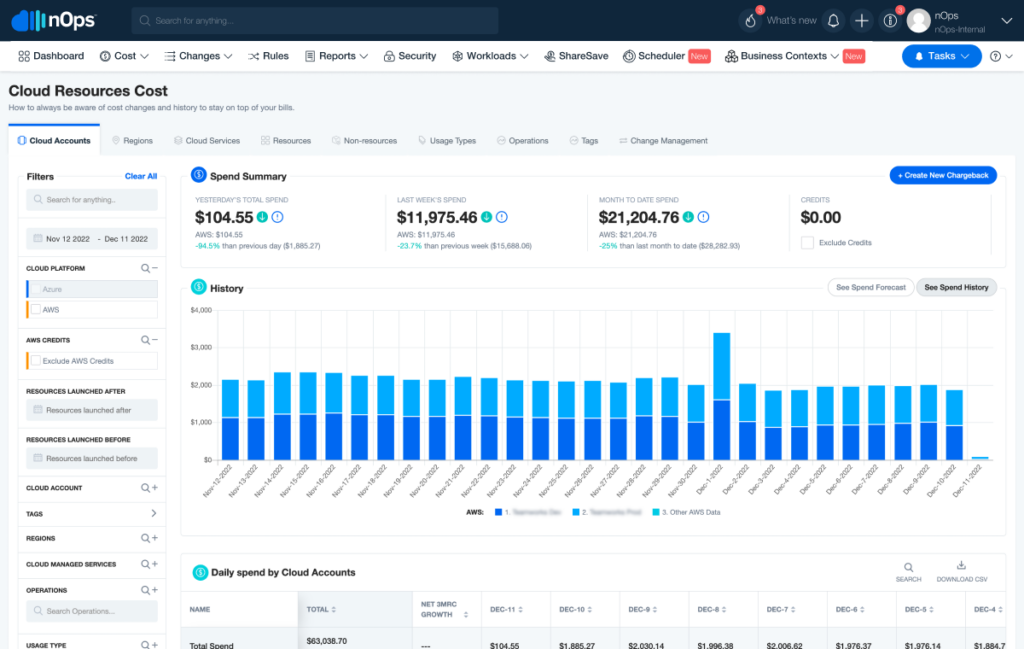
nOps is an AI-powered FinOps automation platform that helps AWS users reduce their costs by up to 50% on autopilot.
With nOps, users can benefit in two key ways. First, you pay less for what you use without the financial risk. nOps charges based on a fraction of your savings, so you only pay if you save.
Second, nOps offers a suite of solutions tailored to your preferred tools and services. nOps makes it simple and easy for engineers to take action with dead simple integrations and time-saving automations.
nOps has processed over a billion dollars in cloud spend and was recently named #1 in G2’s cloud cost management category. Here are some of its cost-saving offerings:
- Cost Consideration Engine: automatically selects the optimal compute resource at the most cost-effective price in real time for you
- Business Contexts: understand 100% of your AWS bill with cost allocation, chargebacks, showbacks, tagging
- ShareSave: risk-free automatic life-cycle management of your EC2/RDS/EKS commitments
- nSwitch (Resource Scheduler): automatically pauses idle resources to reduce costs.
- nSwitch Essentials: automatically optimize your EBS storage via Git and Terraform integrations
- AWS MAP Tracker: maximizes MAP funding, automatically tags resources, and tracks credits for efficient cloud migration
- Well-Architected Framework Review: automates WAFR assessment & report for optimal cloud architecture
You can book a demo to find out how nOps can help you start saving today.
2. AWS CloudWatch
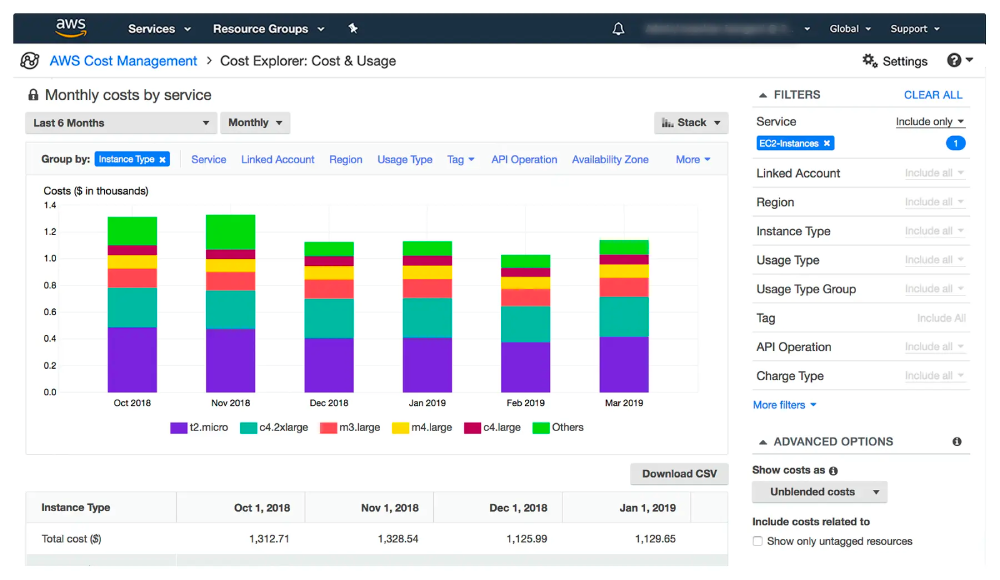
CloudWatch is a monitoring and observability service provided by Amazon Web Services (AWS). It is widely used in the cloud industry for its seamless integration with over 70 highly popular AWS services.
The platform provides in-depth monitoring and observability for AWS resources and applications, allowing users to gain insights into performance, resource utilization, and operational health. Its features include customized dashboards, alarms and notifications, automated resource scaling, troubleshooting, debugging, and many more.
While CloudWatch is undoubtedly one of the most widely used tools to manage cloud costs, it may have limitations in some cases. Setting up, configuring, and fully leveraging its capabilities can be complex. And while it can be used to monitor on-premises and other cloud services, its main focus is geared towards AWS.
3. Apptio Cloudability
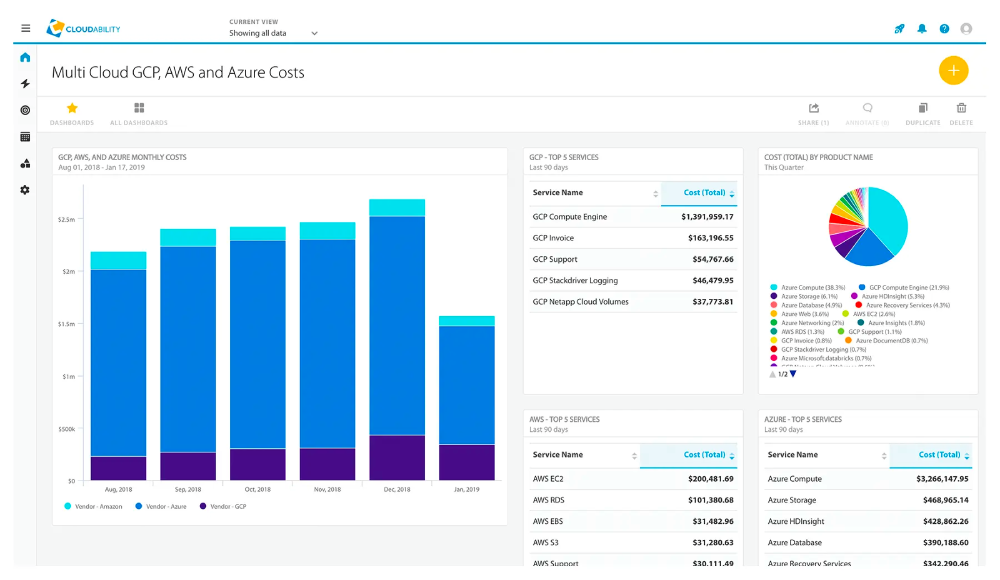
Apptio Cloudability is a cloud financial management platform that improves visibility and governance across cloud environments. It helps organizations optimize their cloud resources for cost, speed, and quality.
Cloudability provides budgeting, forecasting, and rightsizing features as part of its financial management solution. One major advantage of the tools is its FinOps focus. It helps executives correlate cloud spending to business value and helps Finance teams accurately track and forecast cloud spend for more robust budgeting.
While the tool has many financial and budgeting capabilities, it focuses less on linking cost changes and recommendations to the practical engineering side. Once Cloudability provides recommendations, it still falls to the engineering team to determine which recommendations to accept and how to take action on them.
4. Microsoft Azure Cost Management + Billing
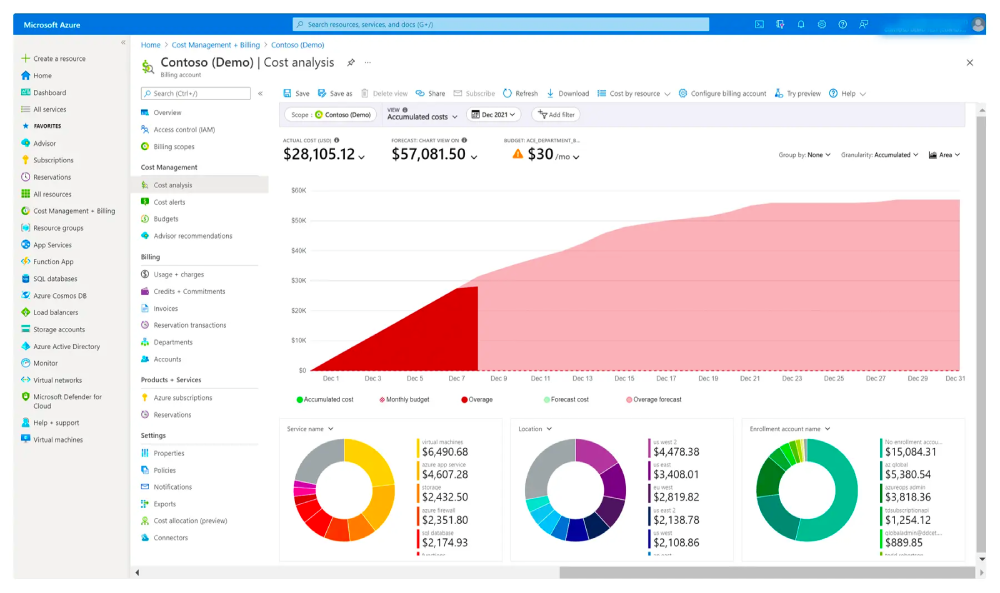
Microsoft Azure Cost Management + Billing is a suite of tools that help organizations monitor, allocate, and optimize the cost of their Microsoft Cloud workloads. The tools are available for free for Azure. However, Microsoft Cost Management has a 1 percent charge on total AWS-managed spend at general availability.
Microsoft Cost Management can be used to report on and analyze cloud costs, as well as monitor costs proactively with budget, anomaly, and scheduled alerts. For monitoring and observability, Microsoft also offers Azure Monitor to provide insights into the operation and performance of your Azure resources.
5. Densify
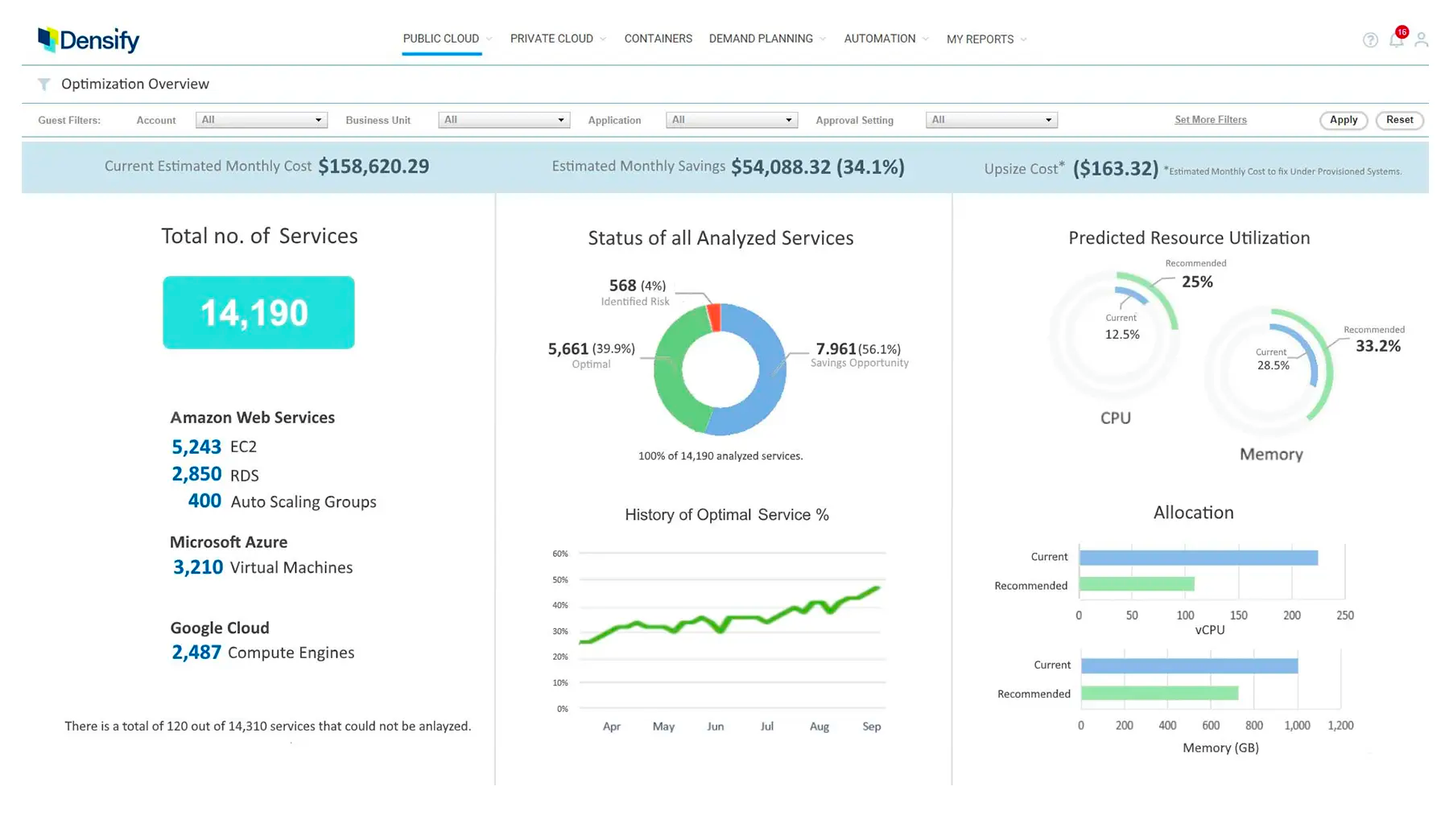
Densify is used to automatically optimize your Kubernetes resources and automatically configure your cloud instances. The platform is also known as Intel Cost Optimizer powered by Densify, and its license subscription is covered by Intel for qualifying organizations.
One of Densify’s strong points is its use of Machine Learning to perform deep analysis of workload characteristics and cloud provider capabilities, to continuously match cloud applications and services to the right cloud infrastructure. And the platform is flexible — it runs on multiple cloud services and is suitable for multicloud and hybrid cloud architectures.
6. Apache Cloudstack
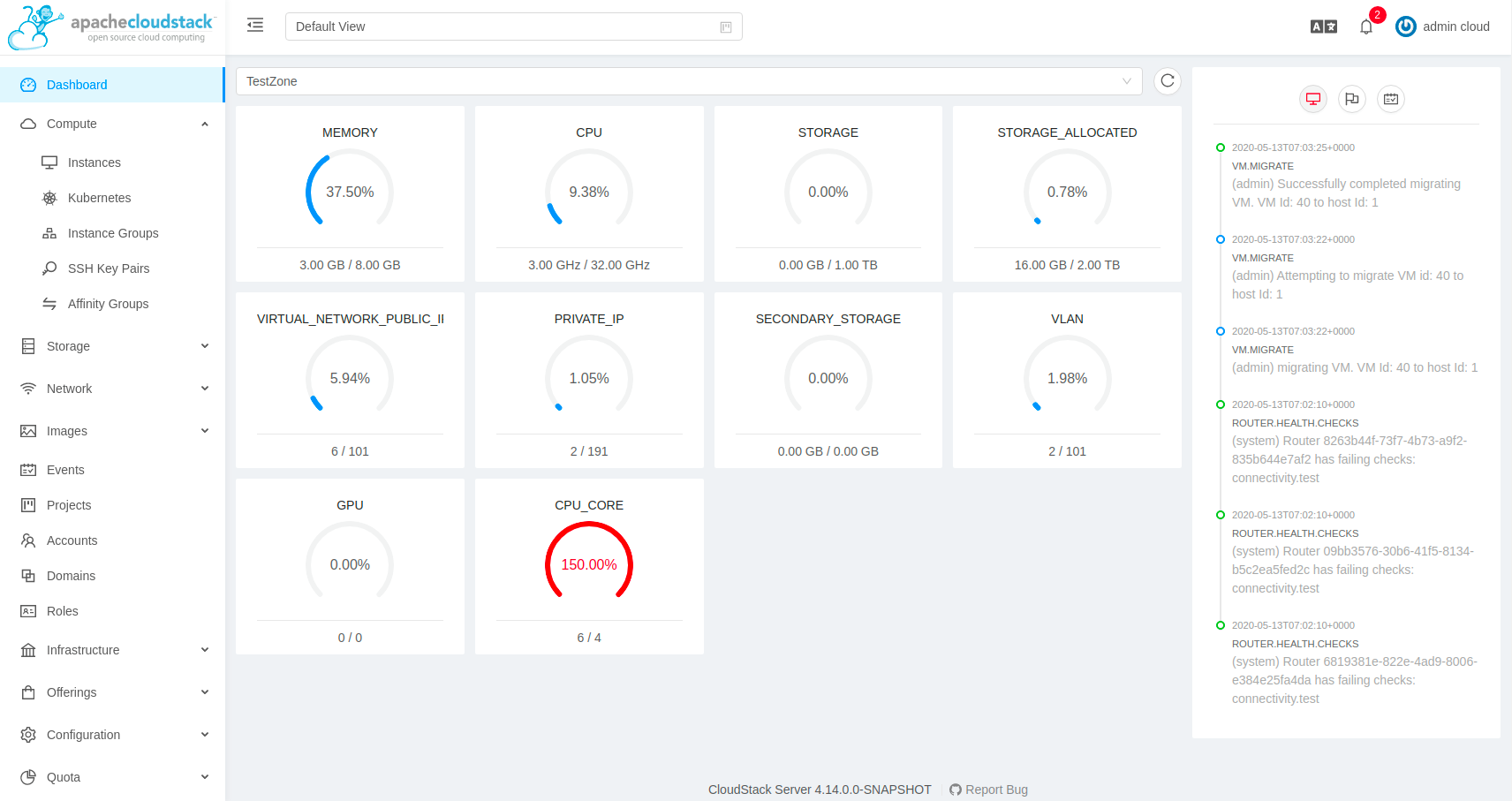
Apache CloudStack is a versatile open-source cloud computing platform. It offers robust capabilities for managing VMs, as a highly available, highly scalable IaaS platform. One of CloudStack’s main selling points is in the name: it aims to include the entire “stack” of features needed for IaaS, including compute orchestration, Network-as-a-Service, user and account management, a full and open native API, resource accounting, with an easy to use User Interface (UI).
While CloudStack offers a robust feature set to manage cloud costs, it may pose a learning curve for newcomers with resource-intensive setup and maintenance. And, intricate configurations may be required for complex deployments, meaning that your team may have to invest some time to fully utilize CloudStack’s benefits.
7. Spot by NetApp
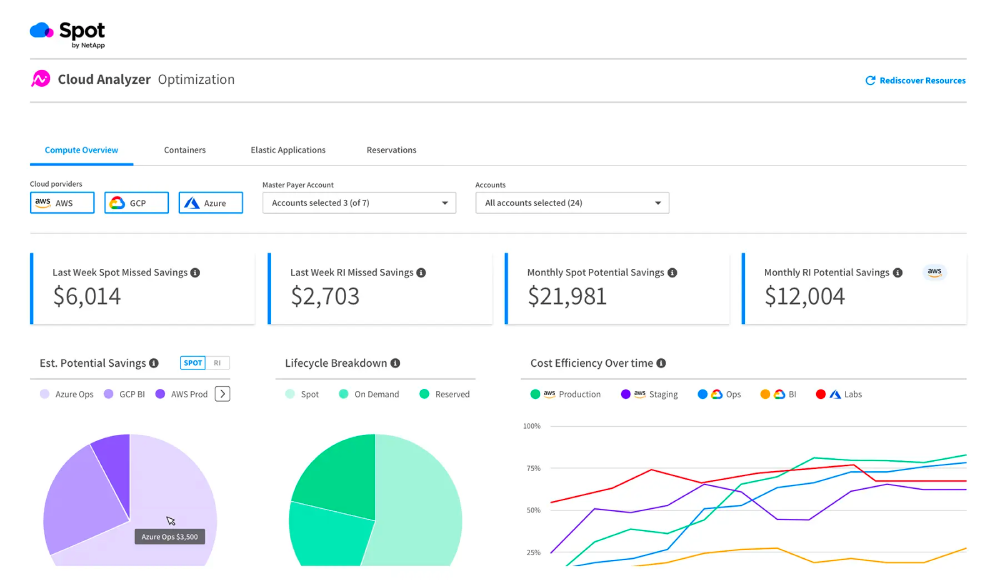
Spot by NetApp (formerly known as Spot.io, which was formerly known as Spotinst) is a CloudOps tool for reliably, securely, and efficiently deploying and operating cloud infrastructure and applications.
Spot.io is able to automate workload management across various cloud providers by constantly analyzing cloud resource usage using machine learning algorithms. Spot helps users identify and leverage cost-saving opportunities for automatic cloud cost control and efficient scaling of workloads.
While Spot’s automation capabilities make it one of the most useful cloud cost management tools, it has some limitations — including a lack of resource scheduling guidelines and real-time pricing detail.
8. Harness
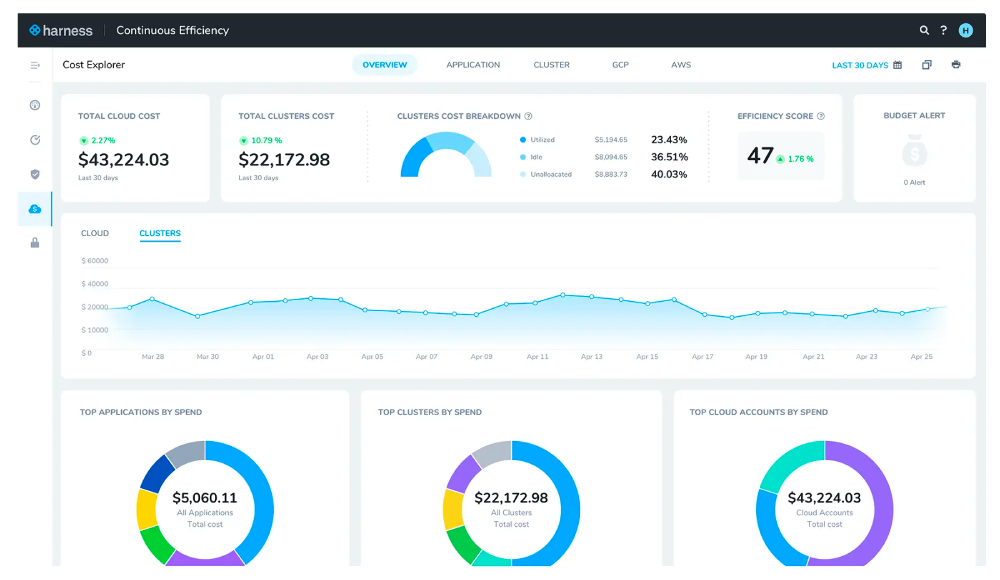
Harness is a CI/CD platform that helps manage cloud costs. It focuses on enhancing cost transparency, optimization, and governance through features such as Continuous Integration, Continuous Delivery, Feature Flags, Cloud Cost Management, Service Reliability Management, Security Testing Orchestration, and Chaos Engineering.
Harness provides suggestions for optimizing workloads for savings and helps automatically shut down idle cloud resources. However, it lacks some key cloud automation features and cloud cost optimization tools, such as spot instance utilization, autoscaling, and rightsizing.
9. IBM Turbonomic
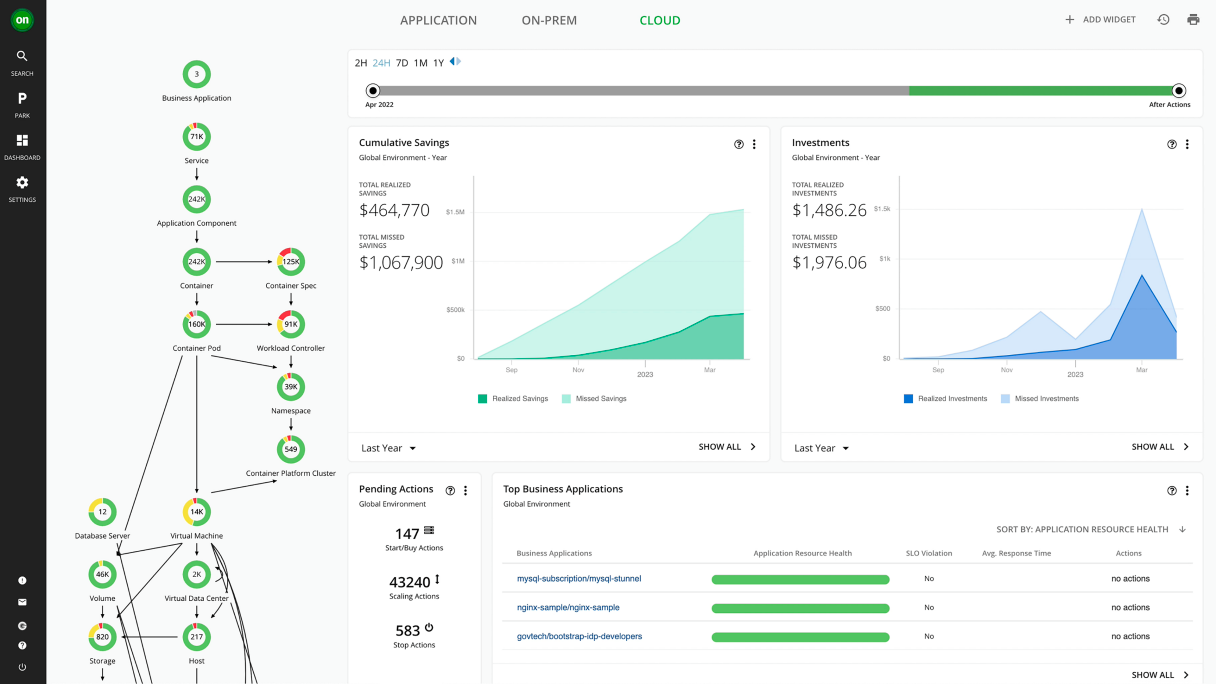
Turbonomic allows you to continuously automate critical actions in real time to deliver the most efficient use of compute, storage, and network resources to your apps at every layer of the stack. It focuses on helping you avoid overprovisioning resources to your cloud environment and only use what you need for reduced cloud costs.
The solution offers a robust feature set for cloud cost optimization, though some report that the platform can be complex to configure and that pricing can be out of reach for many smaller organizations.
10. CloudHealth
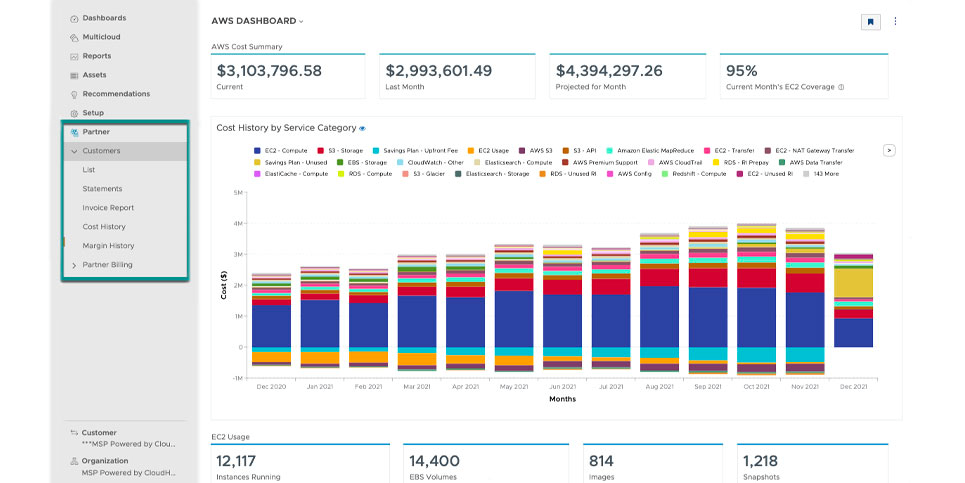
VMWare Tanzu CloudHealth enables users to manage their cloud costs, usage, performance and security through a single interface. Since the platform was acquired by VMWare, the CloudHealth Partner Program leverages the technology to help partners of VMWare manage their cloud costs, improve efficiency and monetize their public cloud businesses.
Some of CloudHealth’s advantages include its comprehensive set tools to manage, analyze, and optimize cloud infrastructure and spending, as well as its multicloud capabilities. However, some find its reporting capabilities to be lacking in customization and granularity.
11. Flexera
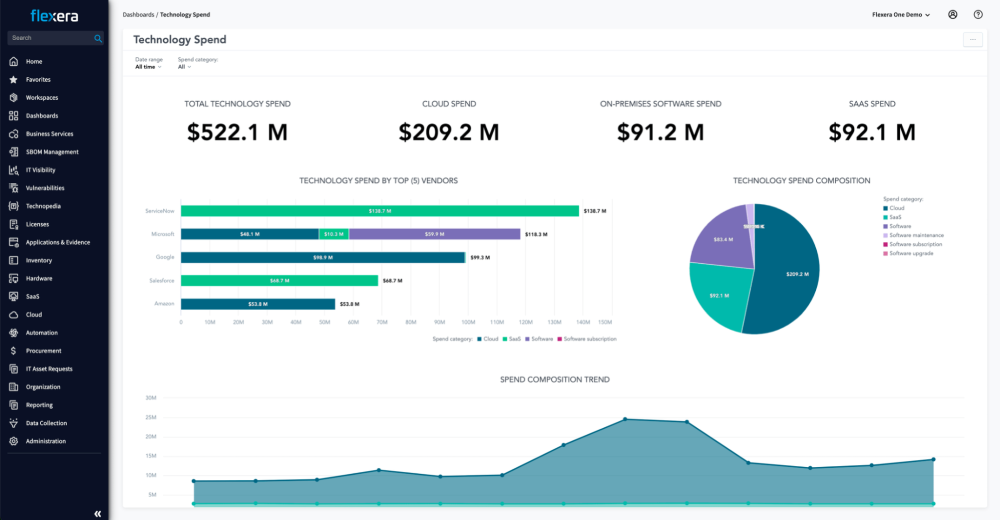
Flexera’s mission is to improve visibility, allocation and efficiency of cloud spend at scale. It provides actionable recommendations, budget controls, and cost policies to help your organization avoid surprises and reduce unnecessary cloud spend.
One of its compelling selling points are the automation tools it provides to act on recommendations, making your cloud optimization and governance more scalable and efficient.
The disadvantages of Flexera include its relatively simple dashboards, monitoring, and reporting capabilities. Some find that these features require further development and documentation to reach their full potential.
12. CloudCheckr
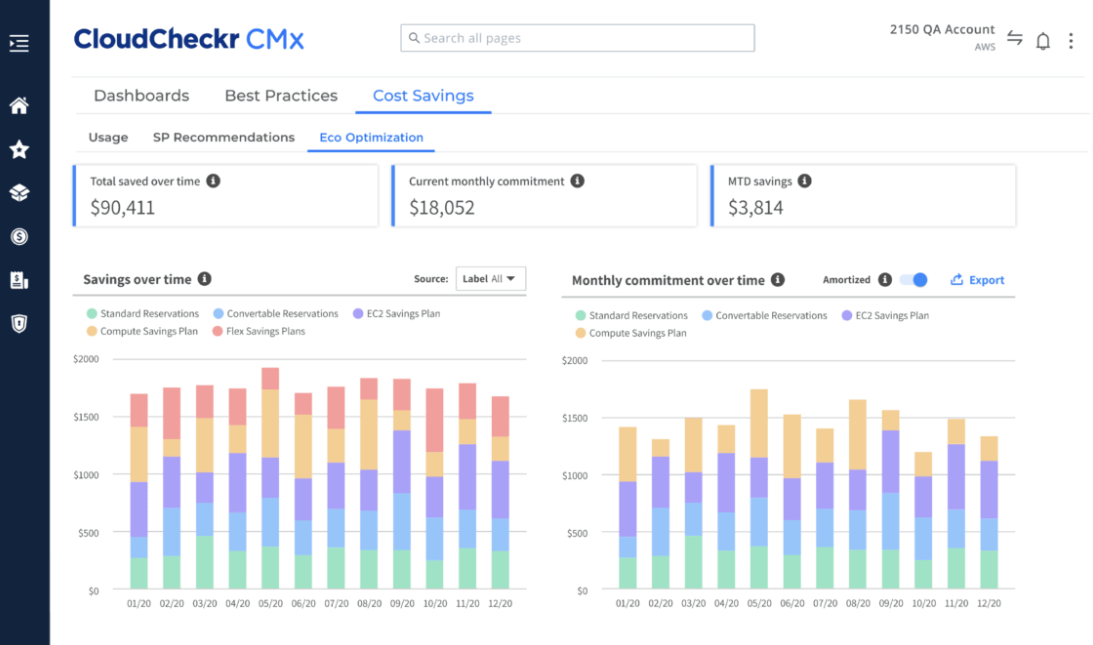
CloudCheckr is an end-to-end cloud management platform. It brings visibility and intelligence to help you lower costs, maintain security and compliance, and optimize cloud resources.
One thing that makes CloudCheckr unique is its focus on Spot. It offers many Spot products such as Spot Eco (Cloud Cost Optimization), Spot Ocean (Containers), Spot Elastigroup (Infrastructure) and Spot Portfolio (CloudOps).
Some of the pros include CloudCheckr’s visibility and monitoring tools, its alert systems, and its end-to-end capabilities. On the other hand, some find that it has a steep learning curve for beginners and that some of its cost-reporting capabilities lack complete accuracy.
13. Nutanix Cloud Manager
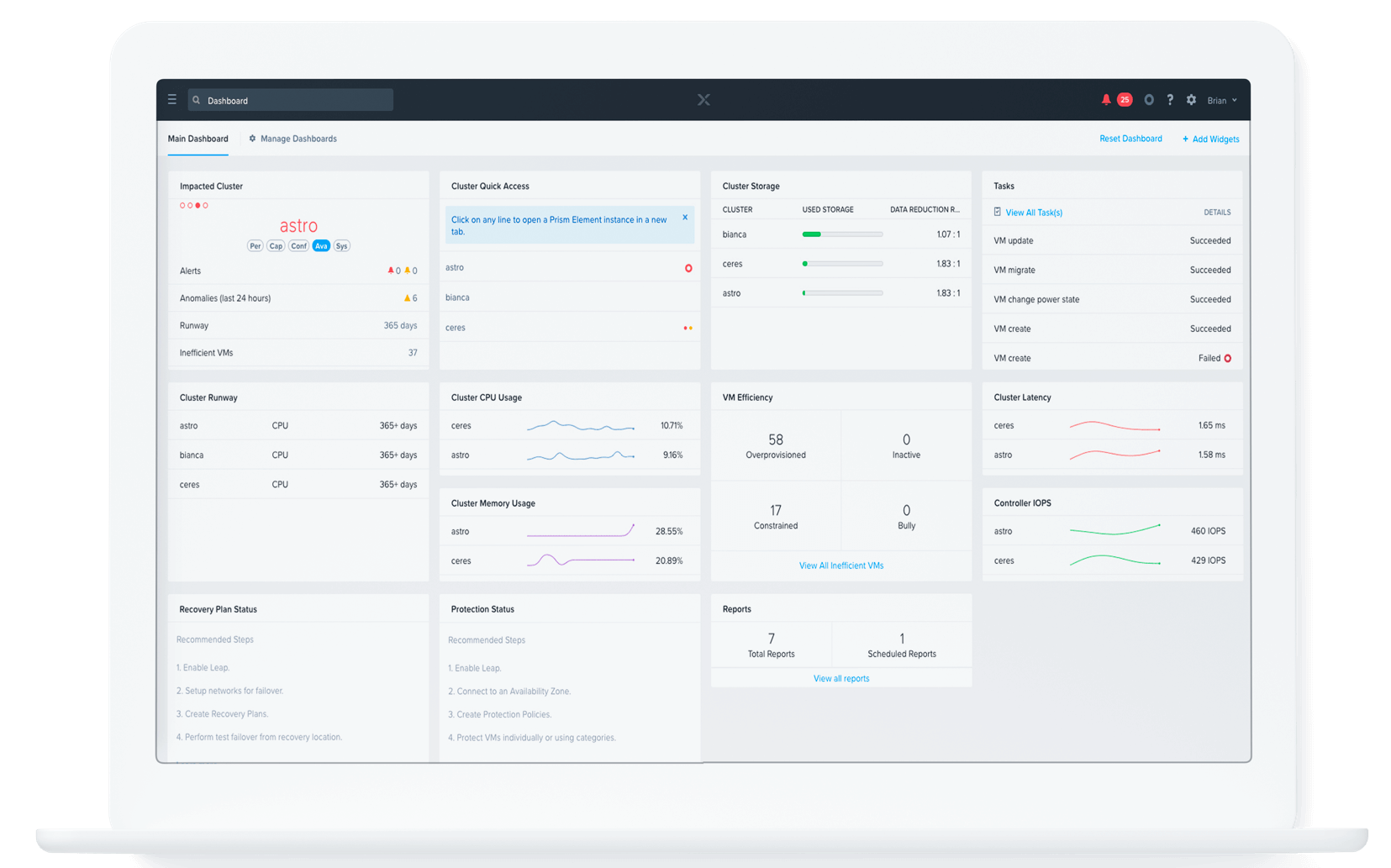
Nutanix Cloud Manager is a multi-cloud IaaS framework that creates a self-service portal for the consumption of IT resources. With NCM, SysAdmins and Architects can define VMs and applications via simple blueprints and control all aspects of the application lifecycle, such as provisioning, scaling and cleanup. Once created, a blueprint can be published to end users through the Nutanix Marketplace, simplifying the complexity of provisioning.
As a result, it is most suited for teams already using Nutanix Marketplace. Some additional benefits include:
- Unified Management and governance across clouds, hypervisors, and application types
- Single Language for Application Modeling with flexibility to integrate with each team’s tool of choice
- Removes IT bottlenecks by turning specialized operations into push- button automation
- Orchestrate across VMs, containers, and cloud resources to build any application
14. Datadog
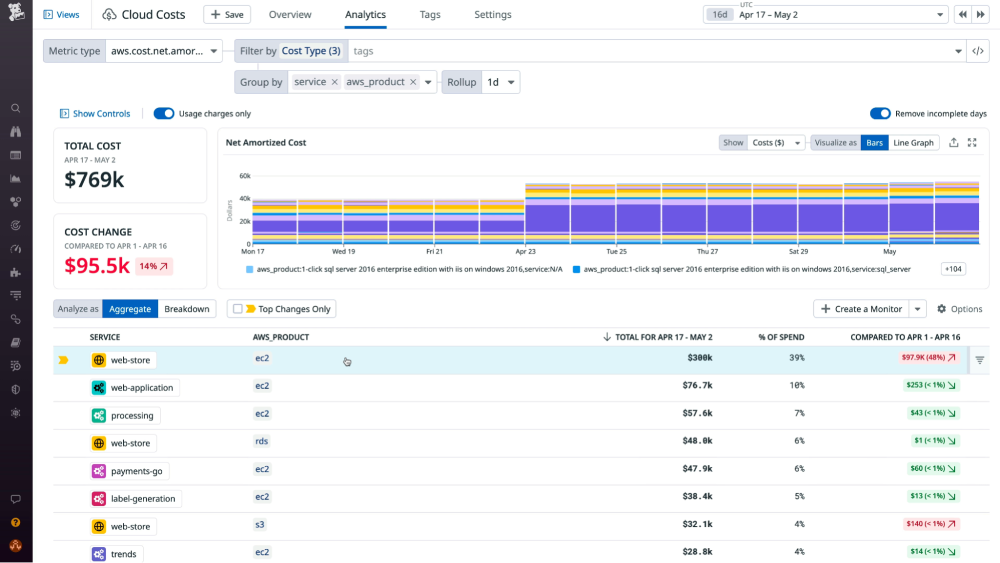
Datadog is one of the most popular monitoring and observability tools today, aggregating metrics and events across the full DevOps stack. While it’s not purely a cloud cost management tool, Datadog Cloud Cost Management can help you optimize your cloud spending by delivering the cost data engineers need and with resource-level context like CPU, memory, and requests. This data is easily scoped to their services and applications so that they can take action and spend effectively.
Datadog also helps you drill down into your AWS or Azure bill, helping you to allocate your cloud costs and make better cost decisions with confidence. Recently, Datadog and nOps have partnered together to make it even easier for engineers to take action on rightsizing recommendations.
15. Zesty
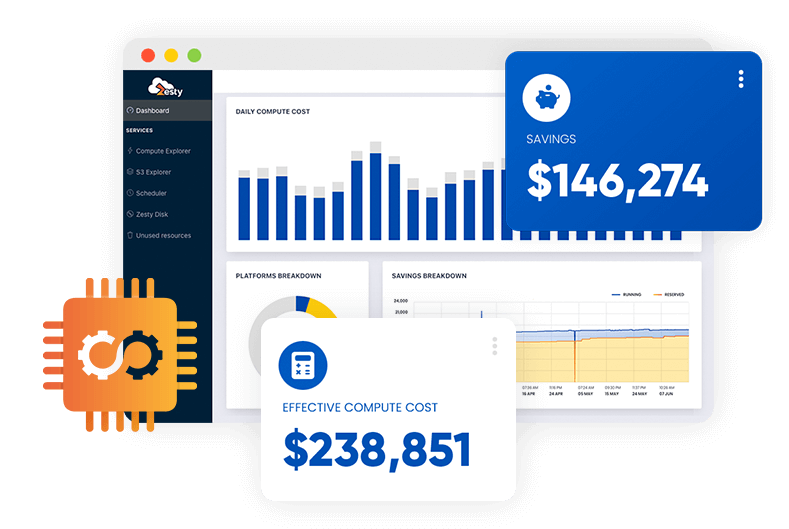
Zesty is an automated cloud cost optimization solution. It uses an AI model that has been trained using both actual and simulated cloud resource consumption data, in order to forecast the precise cloud resources required by an application in real-time, including aspects such as CPU cores and storage.
Zesty leverages these predictions to execute various automated actions, such as resizing, scaling up or down, modifying storage volumes, and procuring or offloading public cloud instances based on the insights provided by the model. So far, the tool only covers EC2 instances.
16. CloudZero
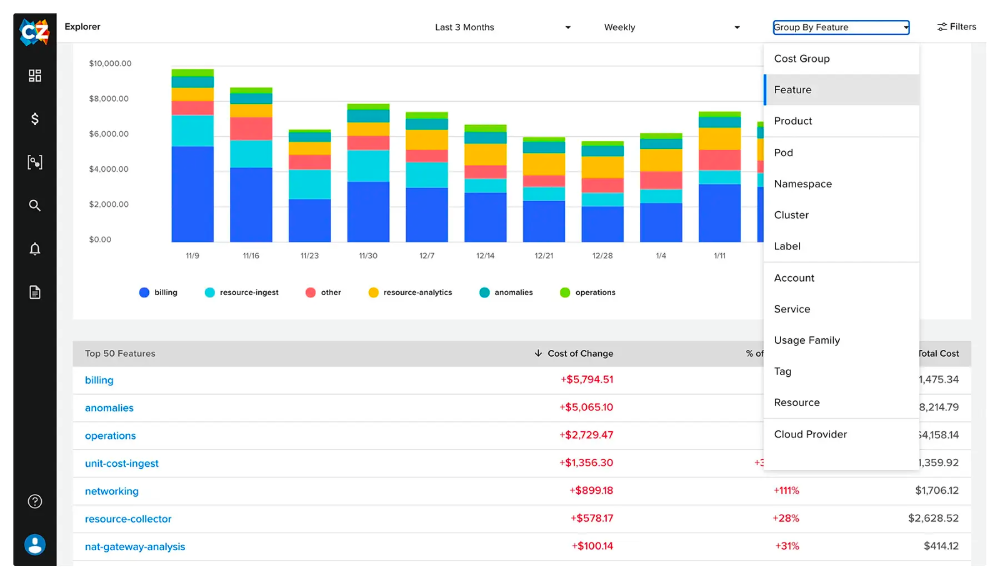
CloudZero as a cloud cost management software delves deep and breaks down expenditures so you can know where, when, and also how your cloud spends its money. With features such as automated tagging and Slack alerts, it helps you to track and attribute cloud costs to teams, customers, unit cost KPIs, and product features.
The platform enables you to obtain real-time cost monitoring for Kubernetes and Snowflake costs across public, private, hybrid, and multi-cloud systems. And, it offers coaching support to help inform your cost optimization strategy.
17. Xosphere

Xosphere is a Spot instance orchestration platform that uses ML to learn your usage patterns and pick the most optimal AWS Spot instances for your workloads. It integrates natively with Amazon Auto Scaling Groups and monitors the instances within each group.
When Spot instance capacity is available at a favorable price, Instance Orchestrator will replace On-Demand instances with Spot instances. On the other hand, when Spot instance capacity is no longer available at a favorable price, it will switch back to On-Demand to ensure your application remains available. XOSphere helps you to switch between Spot and On-Demand to take advantage of Spot prices without a lot of manual effort.
18. ProsperOps
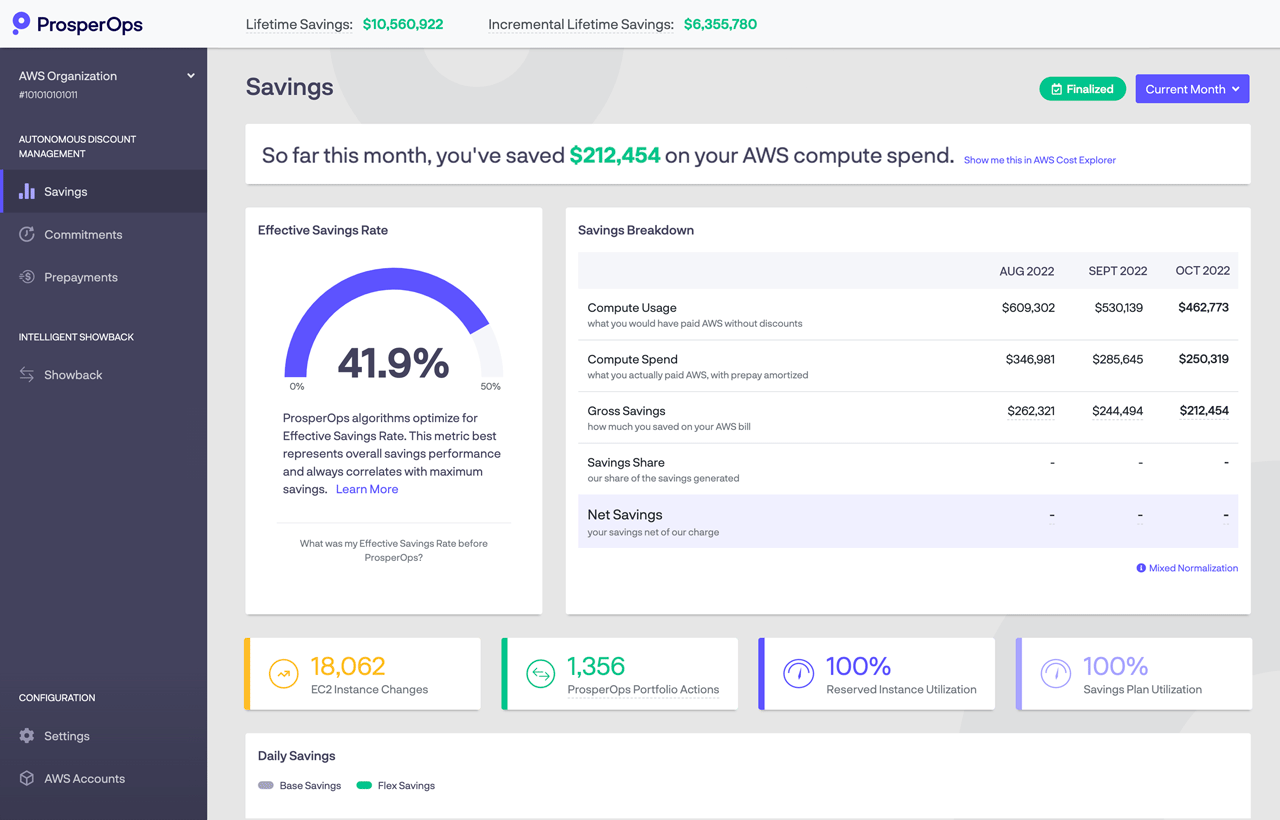
ProsperOps is an automated optimization service that manages purchase commitments on AWS and GCP. The service monitors usage of your resources and automatically adjusts discount instruments.
For example, it manages AWS Reserved Instance and Savings Plan commitments on your behalf, analyzing your usage to purchase and sell commitments as needed to maximize savings outcomes while preserving sufficient flexibility.
While ProsperOps does not manage your Spot instances (in contrast to tools such as Spot by NetApp or Xosphere), its algorithms are Spot-aware.
19. Kubecost

Kubecost (like Cast.ai) provides real-time cost monitoring and optimization for Kubernetes, offering insights into how resources are being utilized and where savings can be made.
It integrates directly into your Kubernetes environment in AWS, GCP, Azure or on-prem, delivering detailed reports on costs by namespace, deployment, or other common Kubernetes concepts, enabling teams to understand the financial impact of their Kubernetes workloads.
Kubecost also offers features such as cost allocation, spend efficiency, and budget alerts that help organizations to implement cost-saving measures.
19. CloudAdmin

CloudAdmin is designed to simplify cloud cost management for businesses leveraging multiple cloud platforms. It provides a unified dashboard that aggregates cost data from various cloud services, offering a comprehensive view of your cloud expenditure. With CloudAdmin, users can easily track, analyze, and optimize their cloud spending, identify underutilized resources, and receive recommendations for cost-saving opportunities.
20. Yotascale
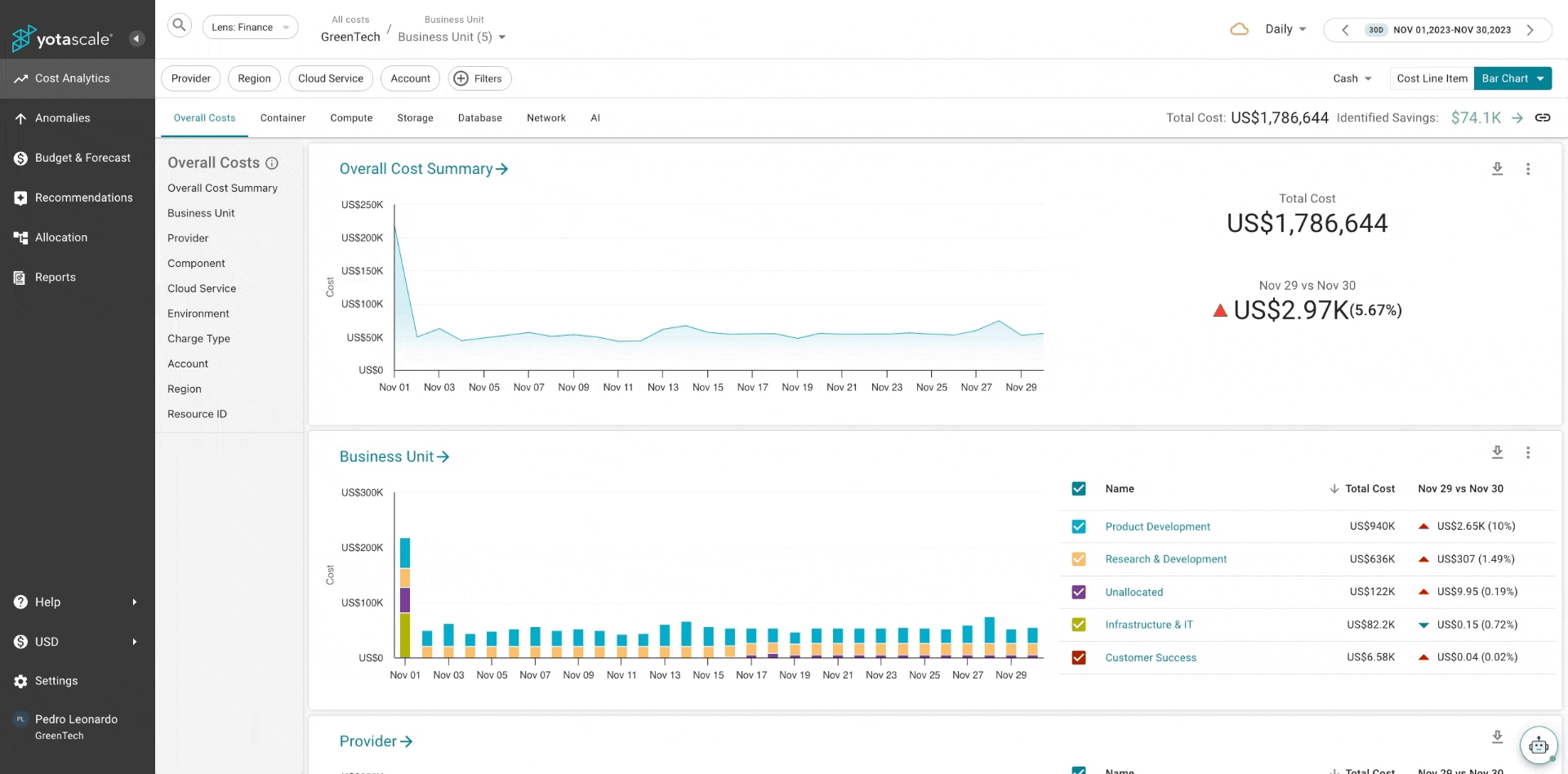
Among other features, the platform’s key features include automated cost allocation, rightsizing recommendations, cost anomaly detection, as well as cloud budgeting reconciliation and forecasting. Recently, it announced Yota AI Assist, a Gen-AI assistant to help you more easily understand your cloud costs.
Which of these cloud cost management tools is best for you?
At nOps, our mission is to make it easy for engineers to take action with dead simple integrations tailored to their preferred tools and services. nOps is helping teams save 50% or more on cloud spend.
nOps Compute Copilot automatically selects and schedules the optimal compute resource at the most cost-effective price in real-time. It offers a seamless one-click integration with cloud services, maximizing your savings with zero engineering effort.
We charge a fraction of the savings, and only make money if you save. That means nOps fits any team size, clientele base, and allocated budget.
Book a demo call to start saving more today!
FAQ
Cloud cost optimization is the process of reducing your cloud resource expenditure, without compromising performance and capacity requirements. Cloud cost control involves analyzing cloud usage patterns, identifying unnecessary expenses, and implementing cost-saving strategies to achieve maximum efficiency and value from cloud resources.
As cloud costs skyrocket and cloud infrastructure becomes more complex, any institution with a significant cloud presence needs cloud cost management software or a cloud cost optimization service to optimize their cloud resource usage. That includes startups, small- to medium-sized companies, and large enterprises.
Some typical features of cloud spend management software include tools for cloud cost visibility, cost allocation, budgeting and forecasting, reporting, resource tagging, showbacks and chargebacks, rightsizing, node management, and autoscaling.

